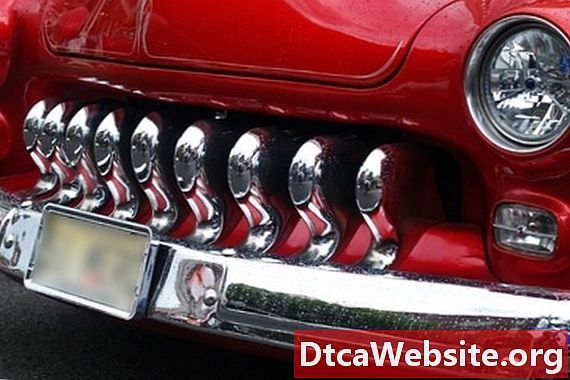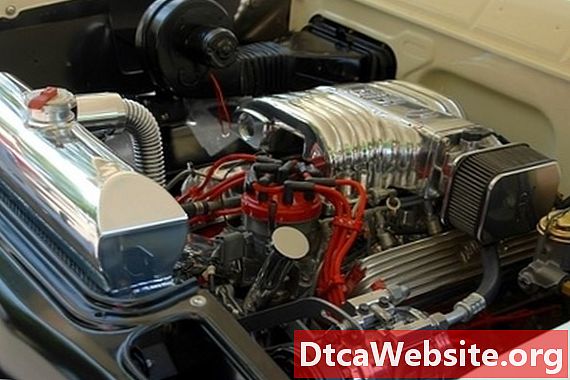
Contenu
Overhauling an automatic transmission can cost thousands. Spending a few minutes learning the basics of how they work can save you a lot of headaches and money.
Step 1
First you should know the basic operation of an automatic transmission, and the major components it contains. You also need to know some of the terms and definitions associated it. To begin with, there is the Torque Converter. It is a mechanical and fluid coupling that connects the engine to the transmission. It acts like a clutch pedal in a standard shift vehicle. As the speed ramps up, the converter spins, multiplying the torque by a turbine design inside the unit. Early names for automatic transmissions played on this fact, using the name "Jet" somewhere in their advertising, such as Turbojet, Hydradrive, Fluid Drive, , or Jetaway. What is important to know is that a One Way Clutch, or Sprag Clutch is used in a torque converter. As the converter spins, it is allowed to overspin, or spin faster than the engine turns. This increases the output and efficiency. As the converter slows down as the engine speed decreases, it must, at some point "catch" or stop so the engine can drive it again. This sprag clutch design lets this happen. The converter can race away in one direction only, and catch against the one way clutch in the other. A defective sprag clutch in the converter will not allow the vehicle to go into low or reverse. Assuming the transmission is full of clean fluid, if going into gear is very slow, or not at all, a good place to begin looking for a problem is the converter. Remove the converter by removing the transmission. Inside the converter are engagement tabs and a spline. Using a couple of long screwdrivers, wedge the spline so it will hold. Try and turn the tab with the other screwdriver. It should free spin in one direction and hold firmly in the other. If it doesnt, the converter is faulty.
Step 2
Another good place to look is the pump pressure if the transmission will not move at all. Although this is rare, since most pumps are very reliable, a quick check is to loosen a transmission cooling line and start the engine. Most cooling lines are at the radiator. While this is not an exacting test since a pressure gauge should be installed, a sound pump will spray fluid under a fairly high pressure. (Wrap a rag around the fitting to prevent the fluid from going everywhere). If you dont see a gusher of fluid, you have a pump problem. Only run the engine a few seconds to prevent running the transmission dry. Before you condemn the pump though, check the transmission filter. This requires removing the service pan, but its worth the effort. A plugged or dirty filter can cause low pressure problems. Its worth noting that not all filters are serviceable. While rare, some filters are buried deep within the transmission. Check your service manual to be sure.
Step 3
Another common problem is delayed shifting or harsh shifting. You can eliminate the converter and pump as being the problem. You have fluid pressure so that means the converter and pump are working. More than likely you have sticking valves in the valve body or shift solenoids. New design transmissions have computer controlled transmissions. These use electro magnets to engage or disengage shift valves. Older transmissions used a valve body. In the older designs, it was a balancing act to determine the time to shift. A throttle valve was connected to the throttle linkage to tell the transmission where the throttle pedal was. This throttle valve was balanced against the speed of the engine via a transmission governor. The higher the speed, the greater the governor pressure. In some really old transmissions, a modulator valve took the place of the throttle valve. This relied on engine vacuum to determine load values. These load values were balanced against speed, or governor values to determine shift points. All of this went away with computers. These electromagnetic valves engage and disengage based on engine values that are computed, and these values simply determine precise shift points. If shifting is erratic, slow, or harsh, if your car is fuel injected, you probably have shift solenoids. The valves in these solenoids may be sticking. A good place to start is to service the transmission, and add a good shift conditioner. If it doesnt solve the problem, you may need to replace the shift solenoids. The same holds true for older transmissions. The valves may be sticking in the valve body or governor. If so, its service, and/or replace the valve body and governor. Its also worth mentioning that built into the transmission, to help cushion the shifts are accumulators. These are spring loaded dampeners. If they fail, the transmission will likely "slam" into gear. It will be a quick, neck-breaking shift, not harsh or delayed.
Step 4
If you can feel your transmission shift, but then "spin out", you have problems. This means your clutch pack or shift band has burned out. Its not good news, because this does mean an overhaul. Inside the transmission are several clutch packs and bands. There are also several more sprag, or one way clutches. The clutch packs consist of pistons that apply pressure against a "pack of friction and steel plates" that drive a sun gear, planet gear, or ring gear. (Planetary gear sets are the basis of automatic transmissions). A sure way to tell is to remove the dipstick, or drop the transmission pan and smell and inspect the fluid. If it is burnt smelling, dark and discolored, its not a good sign.
The last failure to consider is mechanical. Sometimes a gear strips. A good way to tell is to drop the pan and look for metal shavings, metal chips, or bushing material. Bushing material is usually bronze colored. If you find this, its time for an overhaul.
Tip
- Some shift problems can be solved by properly adjusting the throttle valve cable, if it is equipped with one. Shift solenoids are easy to replace on most newer vehicles. They are accessed through the service pan. Follow your vehicle manufacturer directions. Routinely service your transmission. It saves a lot of problems by simply servicing it. Also, check your cooling system. Remember, the transmission is cooled by the radiator. Heat kills a transmission very quickly.
Warning
- Some manufacturers are eliminating dip-sticks. Some have difficult refill procedures. All fluid levels should be checked with the transmission at operating temperature. All fluids are not the same, and using the wrong fluid can permanently damage a transmission. Follow your manufacturers directions and dont short-cut any procedures.
Items you will need
- A shop rag, basic hand tools, and a drain pain.


